Changing tracks | My two year journey of transitioning into climate
Most career transitions are messy. So is pivoting to climate action. I write about my meandering, messy journey of moving to climate work over the last two years.
The story begins a little over two years ago.
I was on a high-speed, swanky train headed toward a popular destination—one that’s somewhat hard to get a ticket on. This train was going through Fintech Wonderland and the final destination was a coveted peak in the high mountains of Fintech leadership.
It was a great train to be on. Plush, rotating seats, large panoramic windows, free Wi-Fi, a café serving gourmet meals—the works. The speed was thrilling. One of the fastest trains in the country, it even had a display showing how fast we were going and how soon we’d reach the next stop. Honestly, I had nothing to complain about.
But something did not feel right. I had a growing sense of unease that I was speeding toward something I didn't actually want. I wasn’t sure I wanted to go to Fintech Wonderland. It made no sense. But I was left wondering —should I even be on this train?
I started noticing other trains passing by. They looked interesting, even exciting—but their destinations were unclear. I was kind of tempted to jump on to one of them, but leaping from one fast-moving train to another didn’t seem like the most prudent idea.
That’s when we passed a place called The Climate Junction. The Fintech train didn’t have a scheduled stop there, but I had an irrational urge to stop and have a look. So I did something quite unlike me —I pulled the emergency chain and jumped off.
I had no idea what to expect at climate junction —what trains left from there, where they were headed, how much the tickets cost, whether I could afford one or if there would even be seats available. Initially, I was focused on figuring out how I would leave the junction. Staying at the junction meant I wasn’t going anywhere, hence not making progress and wasting time and so obviously I shouldn’t be there for too long. Or so I thought.
To my surprise, the junction turned out to be a fascinating place. I met people from all walks of life, each with a story of how they got there and where they were headed next. Their journeys were quite interesting and full of twists and turns I couldn’t have imagined. The station had plenty of activity—stores, information booths, and cafes - all telling you about the different destinations you could go to and the transport options to get there. The destinations included Climate Finance, Climate Tech, Corporate Sustainability, Development Sector, ESG, Climate think tanks, Campaigning organisation, Climate Journalism and many more. Some destinations had high demand. Some were not all that popular. Some routes were long and winding; others, short and intense. Some trains were high speed and always on time; others were slow and unreliable. Some were new with swanky coaches; others looked old and creaky.
I lingered there a while, not sure where to go next.
Eventually, after looking at it longingly for a while, and a lot of hesitation, I stepped on a train marked Climate Storytelling. It promised a scenic route through unfamiliar terrain. The pace was slower, and I didn’t know anyone else who would be on this train. I wasn’t sure I’d fit in. But the views were supposed to be great. The land promised to be rich with meaning, and I found myself eager to explore it.
So here I am on this meandering route. Making friends, learning the lay of the land, and enjoying the ride—one stop at a time.
Now if you’d like to know more about this journey, I have broken it down into 3 parts and dive into each in the following sections.
Jumping off the Finetch train
The age of wandering at the climate junction
Getting onboard the climate storytelling coach
Jumping off the Fintech train
The Trip That Sparked a Shift
In December 2022, we travelled to Spain for an end of year vacation. We had travelled after two years of the Covid lockdown, caught up with friends we hadn’t met in ages and made the most of the warm winter along South Spain’s gorgeous beaches. It was a fantastic trip and I returned to work with that familiar post-vacation crib: “I am not ready to go back to work. I wish I was still on vacation”
The usual routine of dealing with the end of vacation followed. I scrolled through the vacation photos, posted them online with elaborate captions, and even distracted myself by planning my next vacation—Phuket in March. This would typically be the point at which the vacation hangover would fade and regular life would resume.
But not this time.
A Restlessness I Couldn’t Shake
Weeks went by, and the feeling lingered—this isn’t what I want to do. Almost every day I spiraled into existential questions.
Murty, my patient husband and default sounding board was bearing the brunt of this on our long evening walks. Often, my philosophical musings would outlast our apartment complex’s walking path, so we’d detour to the nearby Starbucks, where I would pick up a hot chocolate to comfort me through this existential crisis. Eventually, I turned to writing and began jotting down thoughts about what I might do instead—if not this. My attention kept drifting toward climate change.
I’d been reading about climate change for years. We all covered it in school. I had picked up books, followed the headlines—but I never imagined I’d actually make a career out of it. Still, it was the one theme that kept resurfacing.
So, true to my consultant roots, I made a list. Options, possibilities, scenarios—what might a pivot to climate work look like?
And I did what I always do before big decisions - I gave myself a six-month buffer to see if this feeling lasts, to test if this was a passing whim or something deeper.
Also, just then, in January, I had stepped into a new role at Razorpay—I was now heading business for one of our products, 'RazorpayX Payroll’. Honestly, the role was everything I thought I wanted. I had left consulting two years back to move to Razorpay because eventually I wanted to get into a P&L role and this was just that. And Razorpay was a great place to work. I really liked the people I worked with! And this is what made my restlessness even more confusing.
Phuket and learning about heatwaves
Then came March. And the Phuket vacation.
Phuket hit me hard—literally. I got the worst heatstroke of my life. And I’ve had some memorable ones: one left me with exploding diarrhea glued to the toilet seat in a hotel in Agra, another had me projectile vomiting out of a moving car - a moment that should have been photographed for its perfect arc. Though I didn’t know they were heat strokes when they happened. That realization dawned on me in the middle of the night after my Phuket heatstroke.
My heat stroke in Phuket presented in the form of a headache, an upset stomach and violent vomiting and at first, I conveniently blamed it on the Thai lunch I had stuffed myself with. But my husband was perfectly okay and we had shared the same food. So while I lay in bed tossing and turning, I turned to my trusted advisor - Google - and discovered to my absolute wonder that this was actually a heatstroke. Till then I thought heat strokes meant only headaches and dehydration. It was then that I reflected back and realised that I had been having heat strokes for a long time and felt embarrassingly ignorant for not having known this as a fully grown 31 year old human being!
It was a wake-up call. I knew the heat was getting worse. All the articles I’d read about climate change, global warming, rising heat—they weren’t distant theories any more. They were real. They were here. And they were affecting me in many many ways - some seen and many more silent.
Reading, Ranting, and Realising
As I kept reading, three things became clear:
I didn’t know what to do with all the information about climate change I was gobbling up.
No one around me was reading what I was. In the day of algorithmic feeds no one was getting the articles and content around climate change unless they were already searching for it
Most climate content I came across was dense, distant, gloomy and preachy. Most was also made from a western point of view and very rarely incorporated the India (or global south perspective)
To solve for all three—but mostly the first—I started a newsletter (the one you are reading).
After a bit of back-and-forth (and some help from ChatGPT), I named it ‘Sunny climate stormy climate’ and hit “publish” on April 25, 2023.
Turning 32, and Turning a Corner
By the end of May, I crossed another milestone—my birthday.
I turned 32. And I knew, deep down, that I was too young to spend the rest of my life doing something I didn’t truly care about. And given everything I knew about climate change I felt that nothing else would matter if we couldn’t address the climate challenge. And that’s what I wanted to spend my one wild and precious life doing.
Writing a newsletter on the side wasn’t going to cut it.
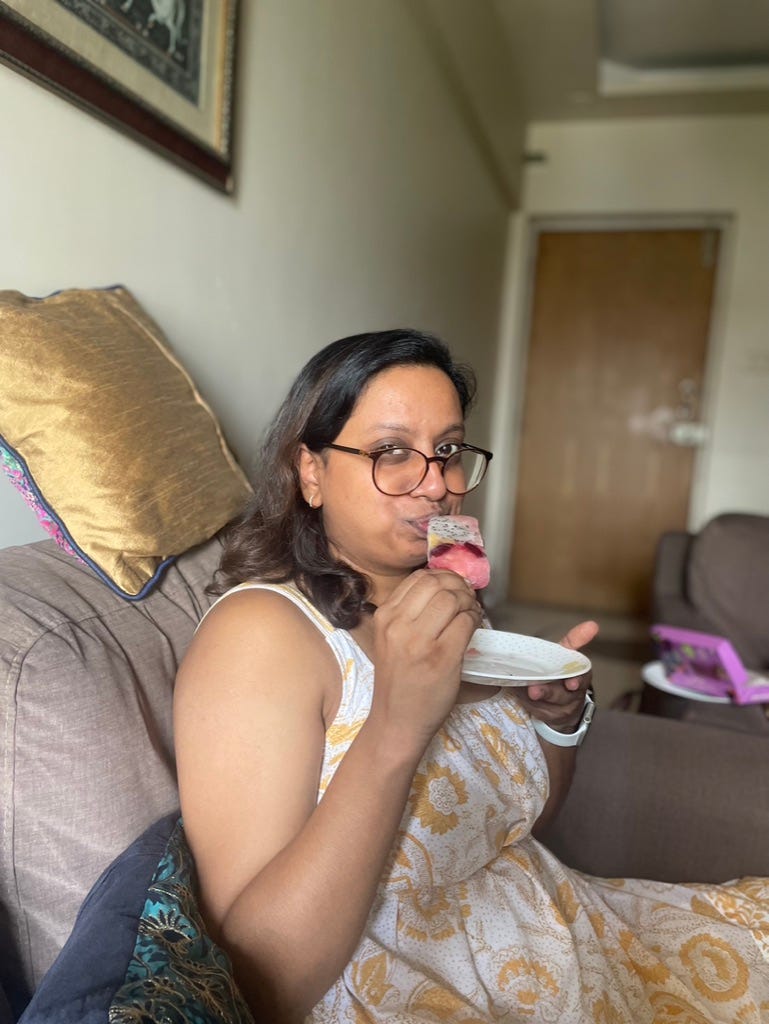
So in June, I made the call - It was time to jump off the train.
The age of wandering at the climate junction
What happens when you step off the fast train but don’t know where to go next?
What Next?
I decided I needed to give this climate thing a shot. So I quit Razorpay. But had no idea what I was going to do next.
I had done a few things by then—completed a climate course by The Guardian, joined the Terra.do community, and started speaking to people about shifting into climate work. It looked like a promising field too, but I really had no idea about what I wanted to do there.
One thing was becoming obvious: I’d need to give it time.
In the seven years I’d worked, I’d mostly always done what I was good at, never giving much thought to what I wanted to do. This time, I wanted to flip that. I wanted to spend some time thinking what I liked to do. I was a little burnt out and didn’t want to dive straight into another full-time role. I needed space—to pause, explore, and figure out what really resonated before jumping on the next train.
The ACT Fellowship came at the right moment. It was a space built for exploration—offering a view of the climate tech landscape without the pressure to immediately deliver.
Act ACT, I looked through the layers of ‘climate’ and learnt that it was a series of interconnected sectors: energy, water, materials, carbon capture, buildings, industry, and more. I began to understand how business models and economic viability fit into solving real climate problems. And I got a sense of the lay of the land - the different organizations and actors operating in the space and the role they played.
Learning for Action
Around the same time, I also began Terra.do’s Learning for Action program.
It offered a structured deep dive into climate change from multiple perspectives—scientific, social, economic, and justice and equity perspective. I appreciated how it grounded the science, highlighted regional realities, and made room for the big question: what role do you want to play in this space?
This was also the first time I allowed myself to seriously consider climate communication as my path.
At the end of the course, we had to submit a post-program plan. I wrote something about storytelling and writing. But I was still too hesitant to say that I wanted to be a “writer” or “storyteller.” (To be fair, I’m still not completely comfortable saying it—even after writing 100 editions of my newsletter.)
Finding Community
I spent a lot of this period talking to people.
I joined events and meetups—hosted by groups like Climate Party, Sustainability Mafia, and Terra. Through all of these, I met people who helped answer questions, generously shared their connections and became friends who would accompany me on this messy journey.
“How do you really talk about climate change?”
The thought that most people around me didn’t care much about the issue stayed with me and continued to bother me.
And I get it. Preaching doesn’t work. We live in a world of infinite content, short attention spans, and nonstop distraction. If I wanted to engage people, I had to try something different.
So I experimented:
Quizzes: I hosted my first climate-themed quiz in Bangalore—it drew 15 people. Since then, I’ve hosted many more, including online editions.
Twitter Series: I started a Twitter thread called “Daily reminder to be grateful for blue skies”—posting one photo a day of blue skies. A small, visual nudge of what we stand to lose if we don’t act. This eventually became a project ‘100 days of blue skies’
Throughout all this, I kept writing my newsletter. And honestly, I think it’s the best thing I did.
Writing is how I process the world. It helps me synthesize information, challenge my own views, and make sense of complexity.
Publishing the newsletter publicly also invited feedback—and sometimes, friction. Especially on a topic as polarizing and personal as climate change. But that discomfort was useful. It sharpened my thinking.
And slowly, it helped me build an identity in a space where I started as a complete outsider. People now sometimes refer to me as ‘the sunny stormy girl’ and I love it!
Getting onboard the climate storytelling coach
The imposter on my back
I knew I wanted to do this. This is where my heart was. But it was such a preposterous idea. I had a training in chemical engineering and then had done an MBA. I had spent the last 7 years working on spreadsheets and telling businesses how to make more money. I knew how to make a business plan. I knew how to lead a team. I understood the nuts and bolts of the payments industry. I was not even a marketing specialist who would have had some exposure to brand building or copy writing. How was I going to be a writer or a storyteller?
But there was a small voice telling me it may not be as crazy as I thought. I had been writing my newsletter for a year. That mattered. Not just because people liked it (though that was nice), but because I liked doing it. Even when no one liked a post, —I still got something out of the process. I just enjoyed putting the newsletter out there every week.
In April, I joined a cohort-based course for content creators called The 6% Club. The course was aimed at helping people get a creative project off the ground. It gave me fresh energy and clarity. I was feeling unsure—after a whole year of writing, I had just 300 subscribers. But someone in the course reframed it for me:
“Imagine 300 people sitting quietly in a room, listening to you. That’s huge.”
It reminded me that the work matters even when it’s small. Especially if I enjoy doing it.
I had begun to see some signs that what I was doing made some sense. Some of the quizzes had done really well. There were comments on posts saying people found it insightful or liked my style of writing. The blue sky series had a few loyal fans.
And maybe I wasn’t didn’t have a ticket on the “secret express train” to viral creative success. But there was always the slow train to storytelling. Rumored to be bumpy and erratic, yes—but open to anyone willing to board.
Landing at Rainmatter
The first time I met Sameer, the CEO of Rainmatter we had a long winding chat about why place matters, emergence and why the conversation on climate needs to go mainstream. I spoke to him about how I thought storytelling was crucial and shared ideas about the million things I wanted to do, just happy I had found another person who resonated with me. He called me a few days later saying why don’t I join them while I go on this climate storytelling adventure. I said I’d give it a shot and see where it goes. 8 months in, I am quite glad I did!
Now at Rainmatter, I am focused on building an ecosystem for climate storytelling in India. I look for partners who are working in this space and find ways to elevate and amplify their work.
In the last 8 months here, I have also had the opportunity to work with a diverse set of team members and partner organizations. And I find their work and stories truly inspiring. It’s made me realise the importance of biodiversity, the importance of community and the importance of believing in your place.
Over time, I am slowly finding my place in this jigsaw puzzle of climate action and am finding my voice in talking about climate change.
My Linkedin profile now reads ‘Trying to figure how do we talk about climate change?’. And I think it’s quite accurate. Sometimes I can’t believe I am actually doing this!
I have been on podcasts talking about what climate change means, have spoken at multiple discussions on issues related to climate change and most recently, have started a Youtube show ‘The climate brief’ that aims to bring climate related news to people in short videos in an engaging fashion.
So that’s my journey so far. It’s not been a straight line. There’s been as much unlearning as learning. It’s only the beginning and I have a long way ahead. I am still not sure what my destination is. I may even be going in circles, but I am sure as hell enjoying the ride.
My top learnings from this journey so far:
I can’t believe I am doing this, but as cringe as this is, it may help someone on a similar journey, so... This may not be apt for everyone, but this is what worked for me in my context.
1. Communities carry you
I’ve gained so much through communities—access to knowledge, experts, friendships, validation, and encouragement. Most importantly, the feeling that I’m not alone. From Terra to The 6% Club, these spaces have held me through uncertainty and helped me grow.
2. People make all the difference
At different points, I was lucky enough to have conversations that gave me direction, clarity, and courage. I am deeply thankful for the time and candid thoughts many kind folks generously shared.
3. Career transitions are messy—and that’s okay
You don’t leap from one summit to another. You descend into a valley—uncertain, unclear, often dark—and may wander before you even see the next mountain. You might start climbing one and decide halfway up that it’s not for you. That’s part of the journey.
4. It’s a long game
Climate solutions are inherently long-term—whether it’s nature-based approaches or climate-tech. And so is a career in this space. You won’t see immediate returns. Think about whether you want to be here for the next 5 years, not just the next 3 months.
5. Not everyone will get it, and that’s fine
People from your old world might not understand this shift—and that can be hard if you’ve always been on a conventional, well-applauded path. You may no longer get external validation. And you’ll have to learn to be okay with that.
6. Purpose is fuel
I truly believe that to be really good at something you have to stick with it long enough. And to stick with something long enough, you need a ‘why’ that comes from within. It’s hard to keep going when no one is watching—unless you love the work for its own sake. Working in climate is not easy. Find your why.
7. You’re new here—act like it (but don’t shrink yourself)
Even if you bring years of experience, this is a new domain. Use your transferable skills, but don’t expect to walk in at the same title or compensation. Be humble, stay open, and learn.
8. There’s a lot to be done
This field is new, growing, and underbuilt. There’s real space to contribute. Be curious, proactive, and willing to shape your own role.
9. Be smart about money
Understand your financial runway. Define your threshold, not simply what your old salary benchmarked. A transition might require trade-offs. If you expect your field to change dramatically without any friction in earnings—you’re setting yourself up for disappointment.
10. Prioritise your mental health
Transitions can be destabilising. Uncertainty is tiring. Have rituals, anchors, and people to lean on.
11. Look within as much as you look outside
Explore trends, yes—but also reflect on what brings you joy, what energises you, and what you're innately good at. That’s where your path is most likely to hold.
12. Don’t overthink. Take the leap.
At some point, thinking won’t get you further. Only doing will. Jump off the train!

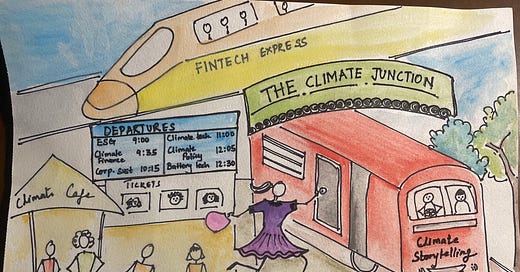



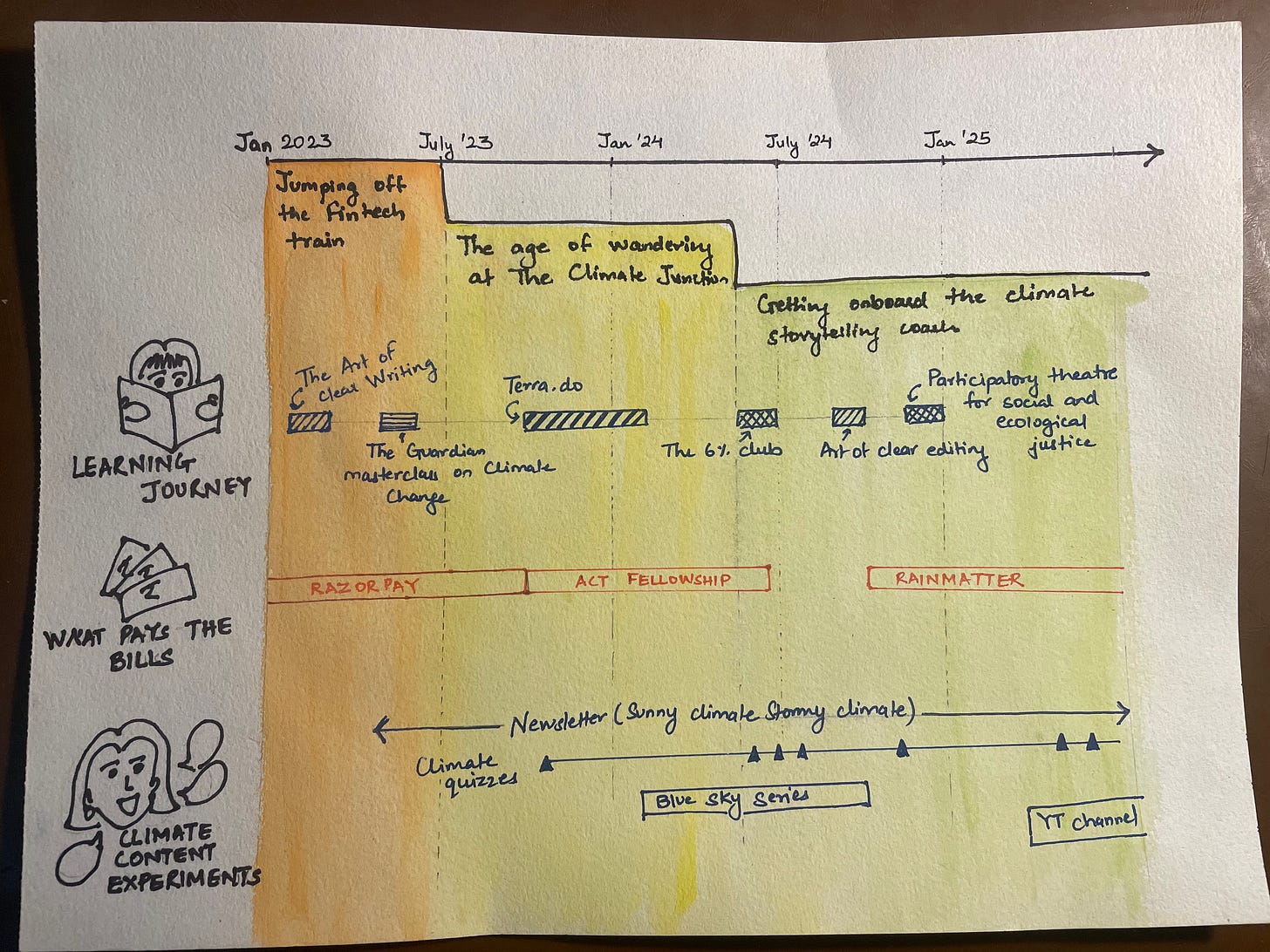
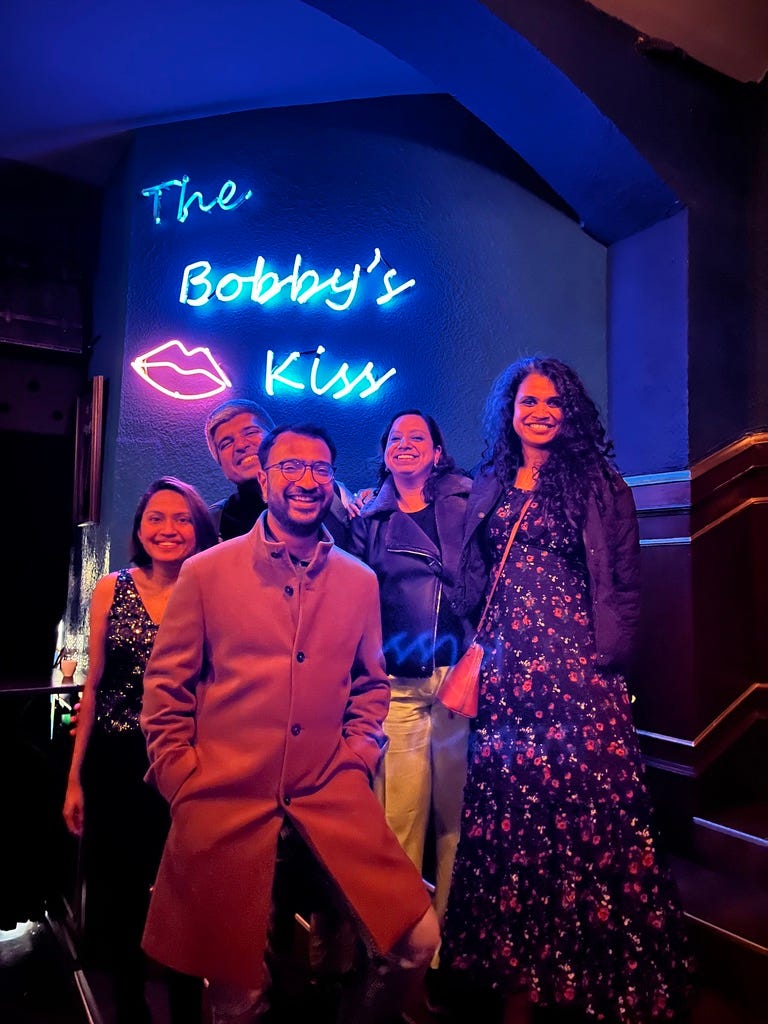
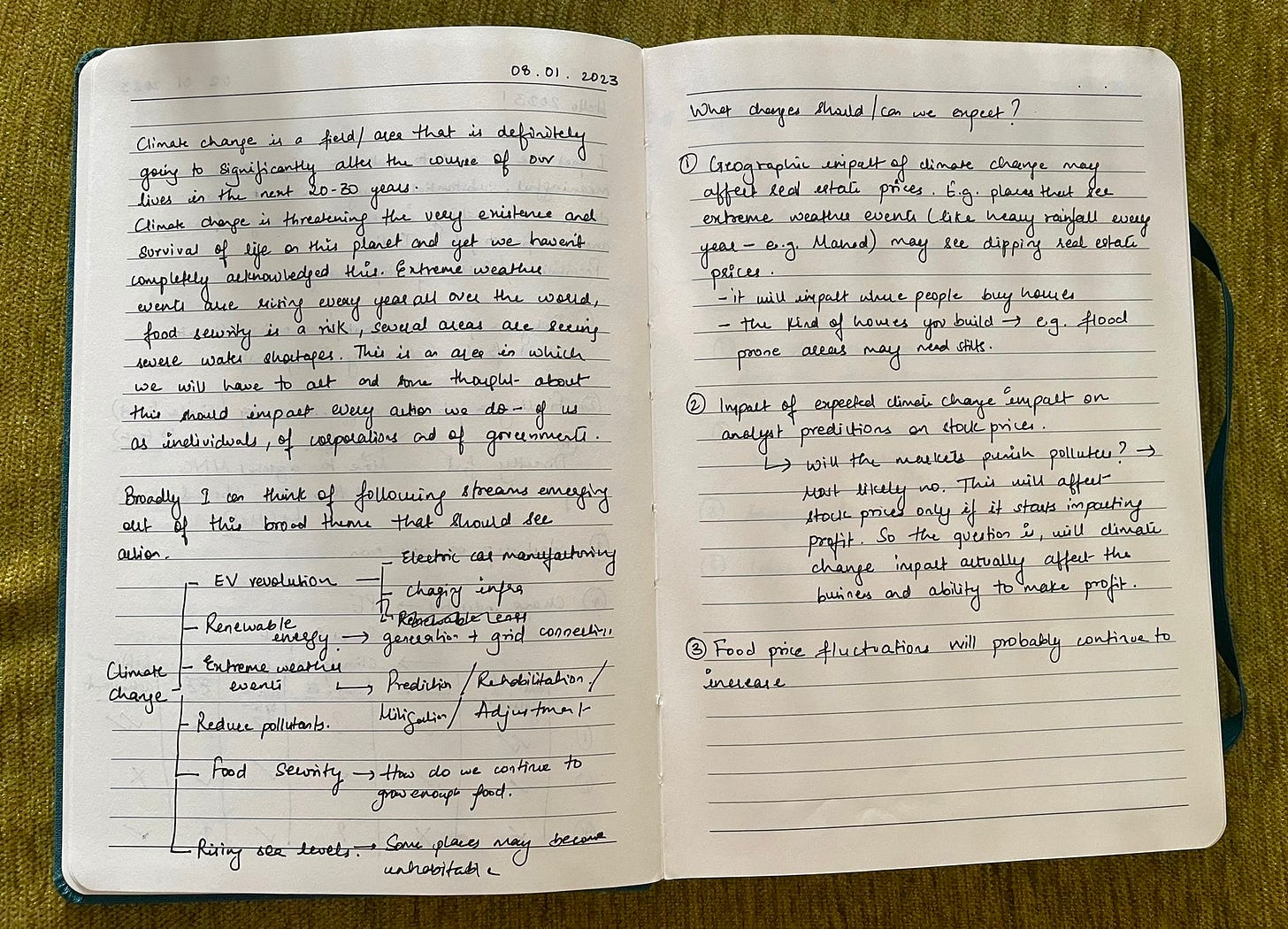
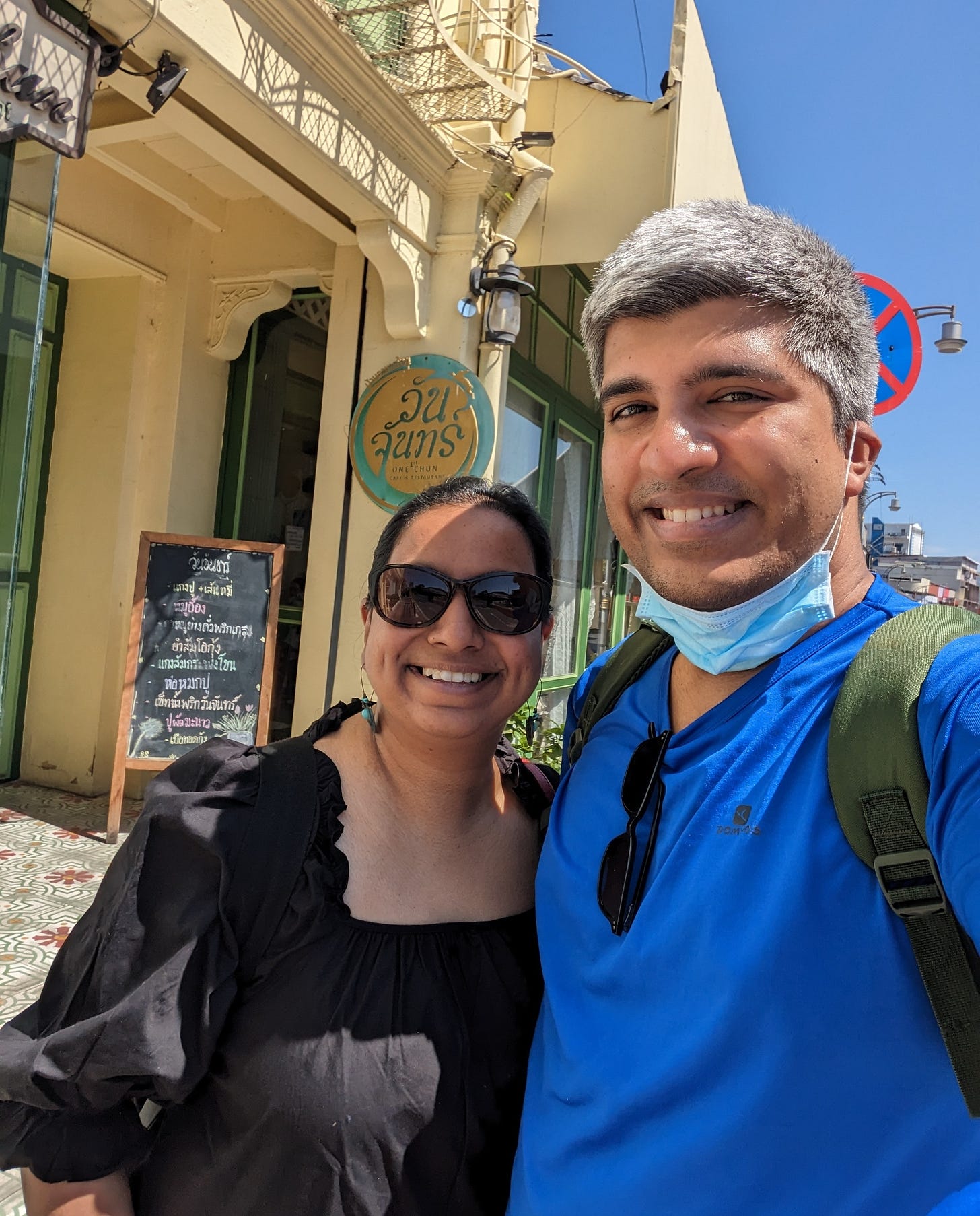
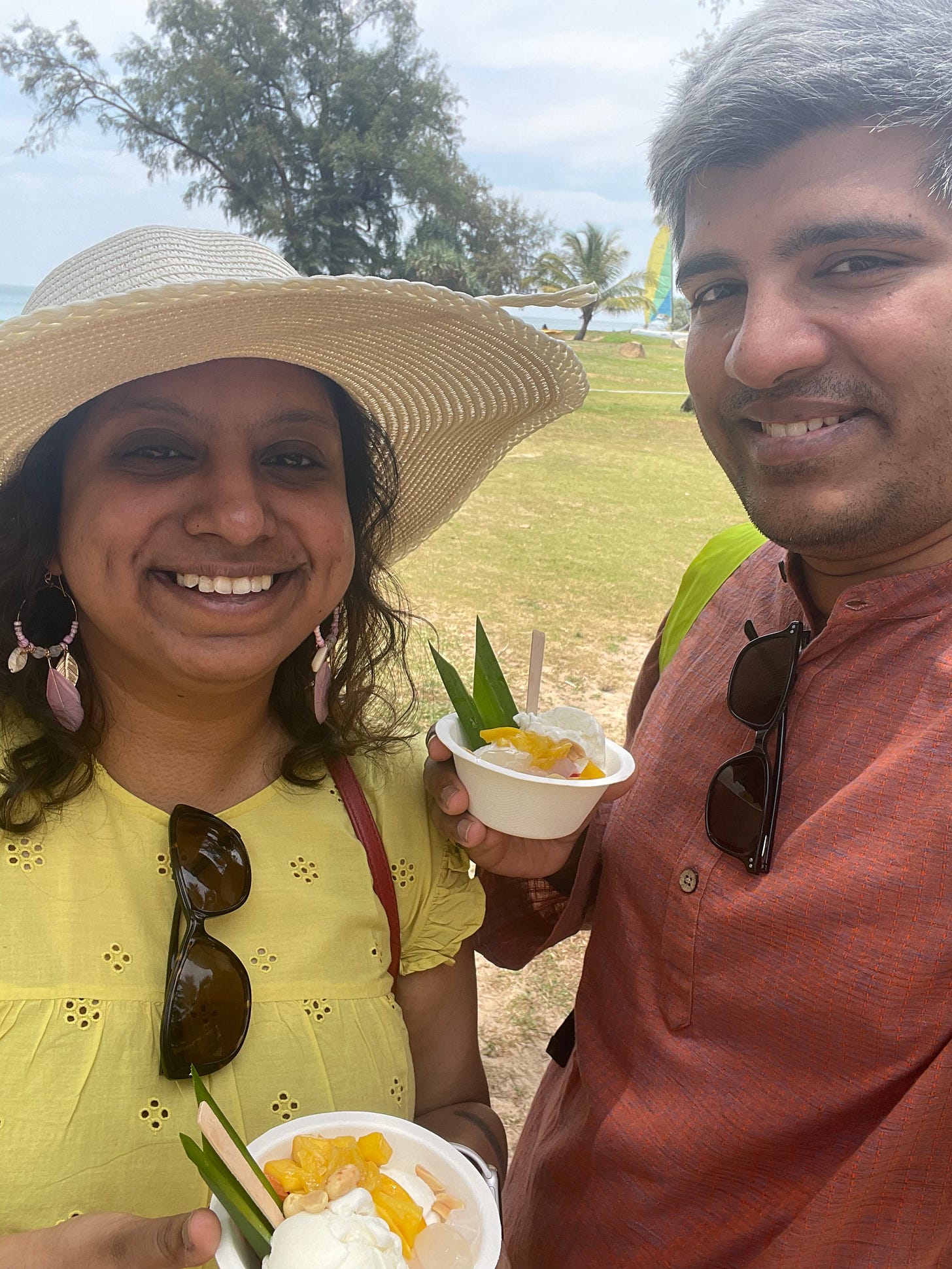
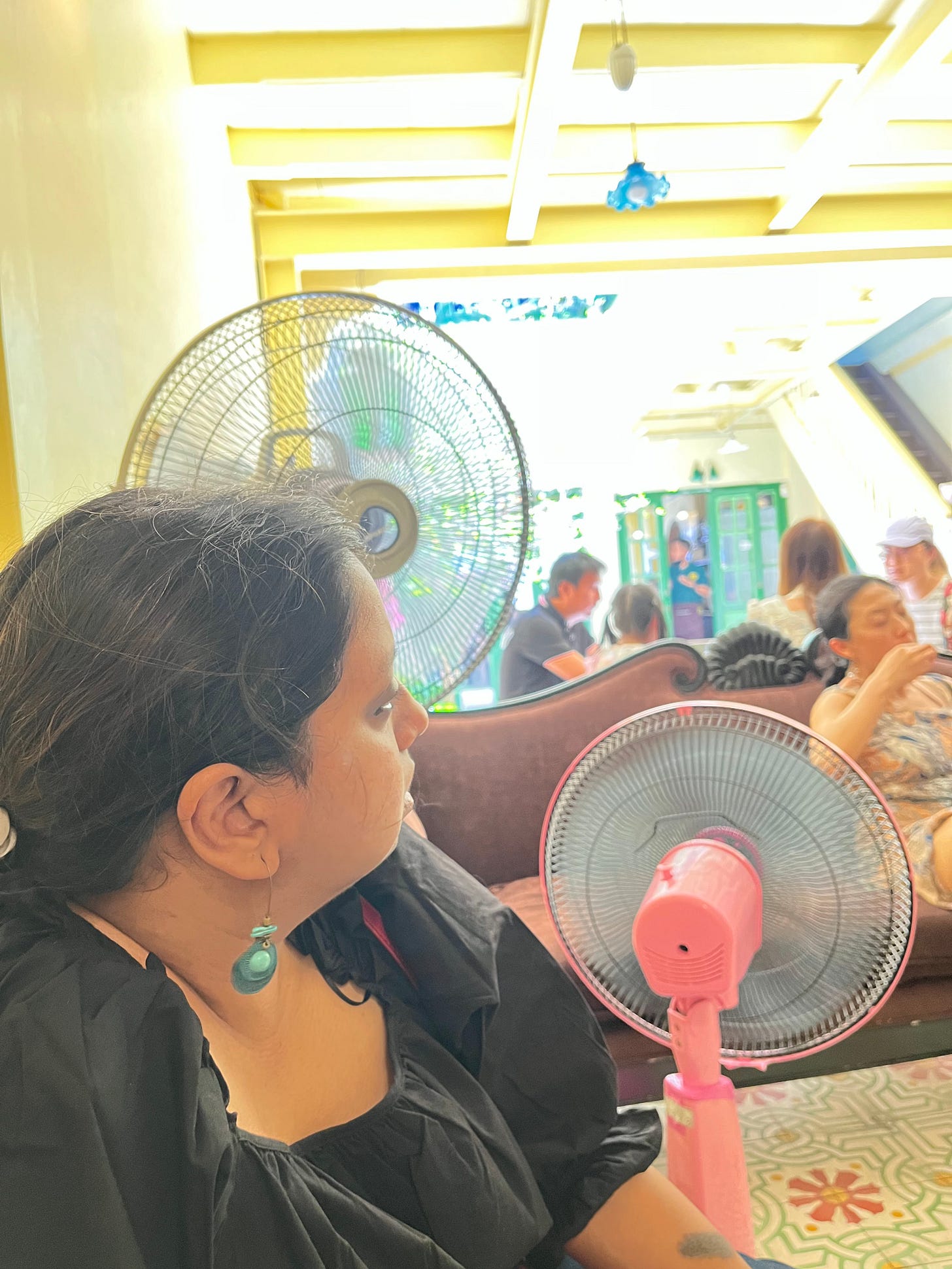

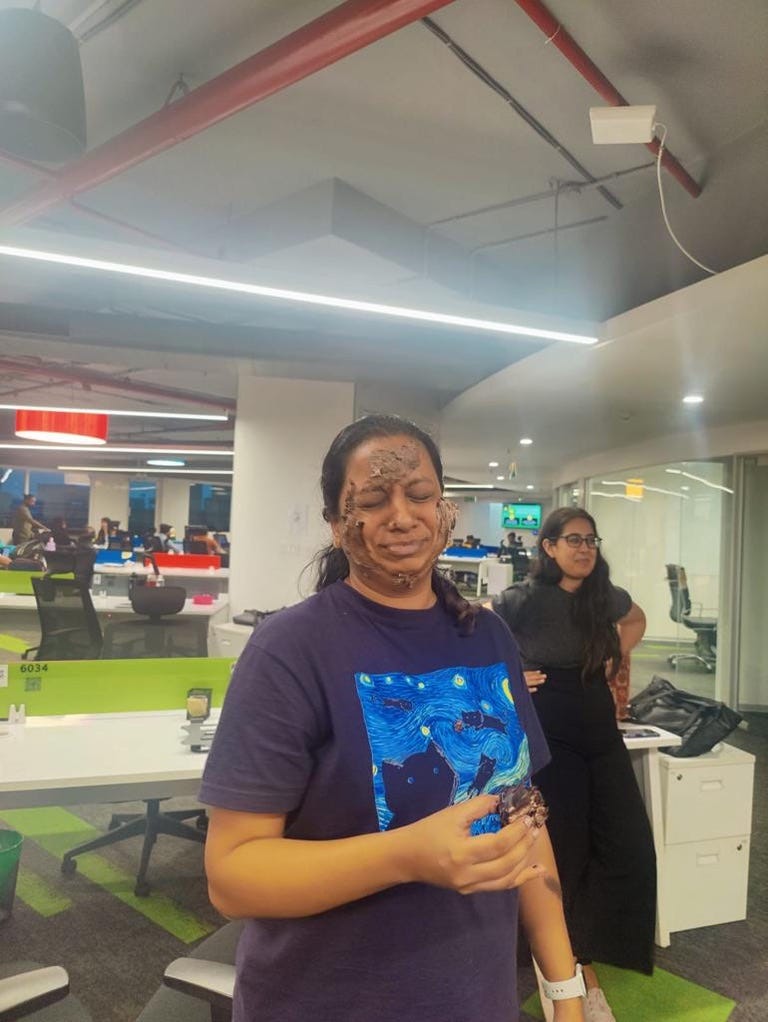

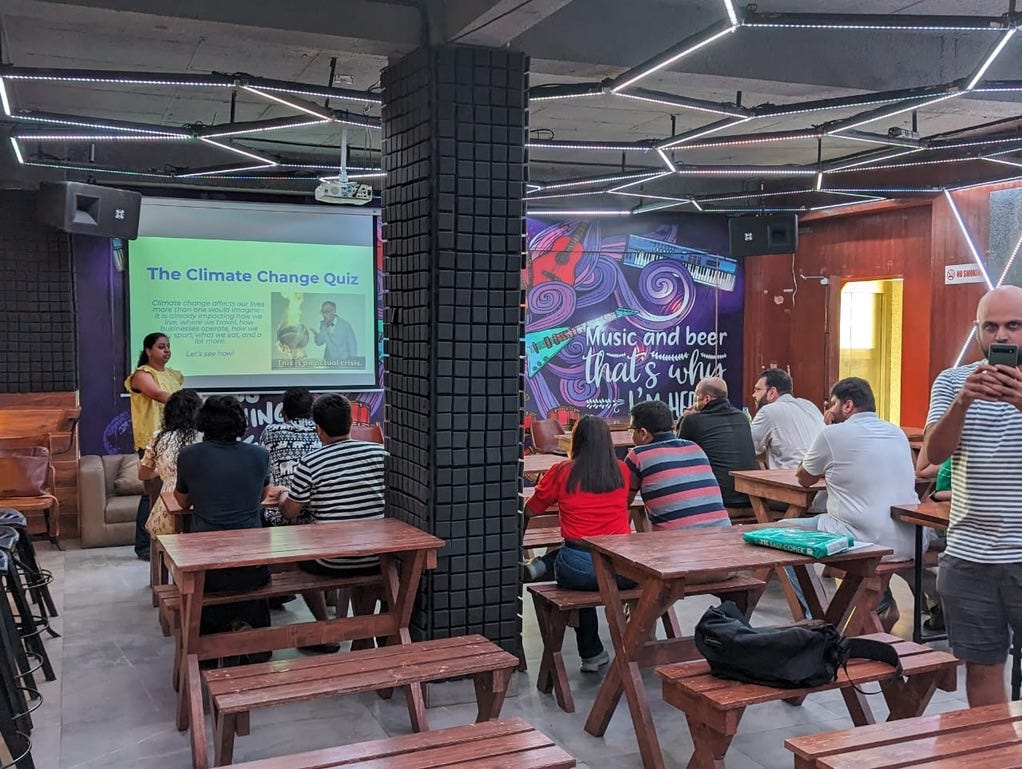


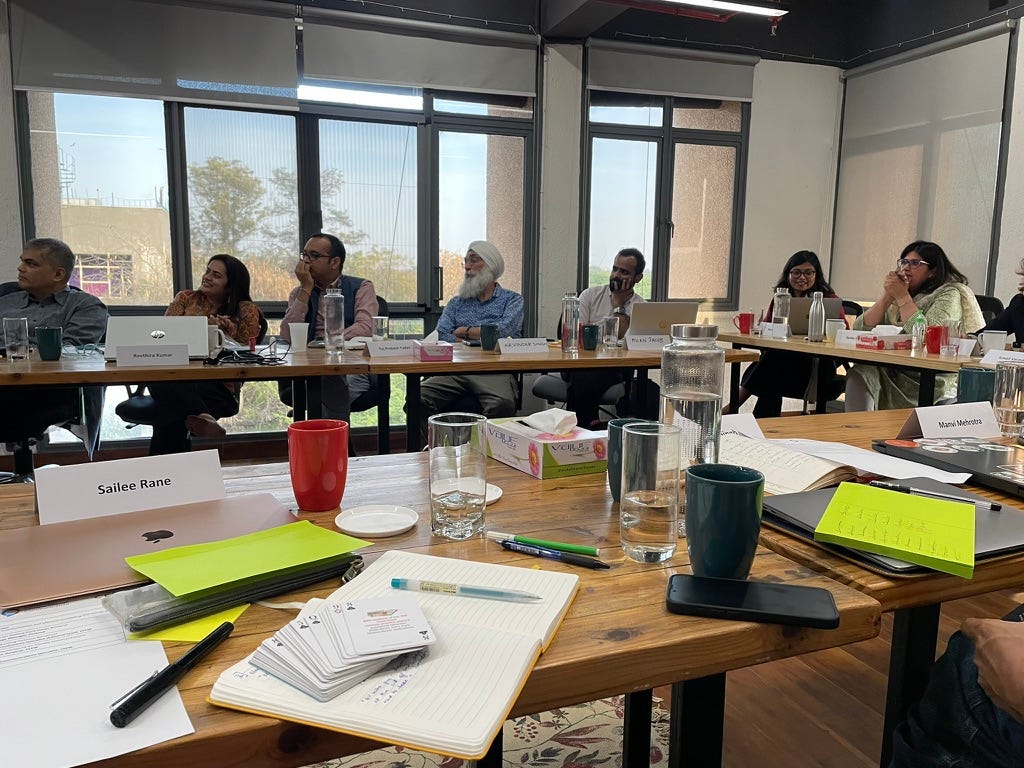

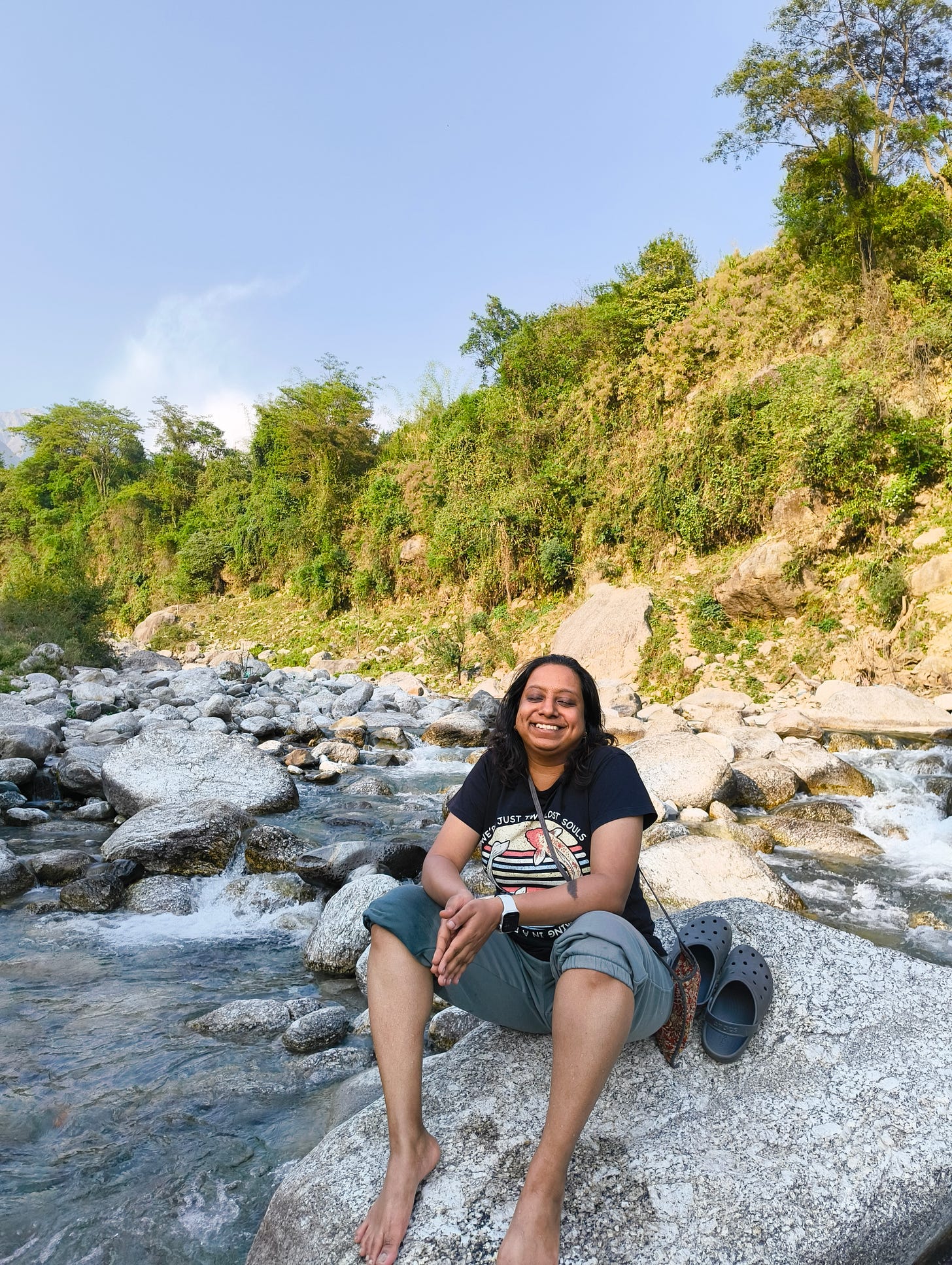
So well documented, the ups and downs of a career shift are never easy. The "why" is the most important aspect of it. You've done so well in two years of your "shifting time". I took a lot more years but happy to have found my space as well. Very relatable journey and kudos for taking the leap! We need as many on this train as we can :)
Sailee,what a honest and real journey . I used to read on and off your NL and started incorporating little changes in my daily habits(for a toddler at home, so time constrains). I have been mulling some life decisions and your post gave me such a clarity on what to do next. I am sort of jealous of you that you took such a clear and brave decision at such a young age.